Smart Home Innovations: How to embrace a Modern Delightful Living
By Mz Chaker & EAGC │May 04, 2025
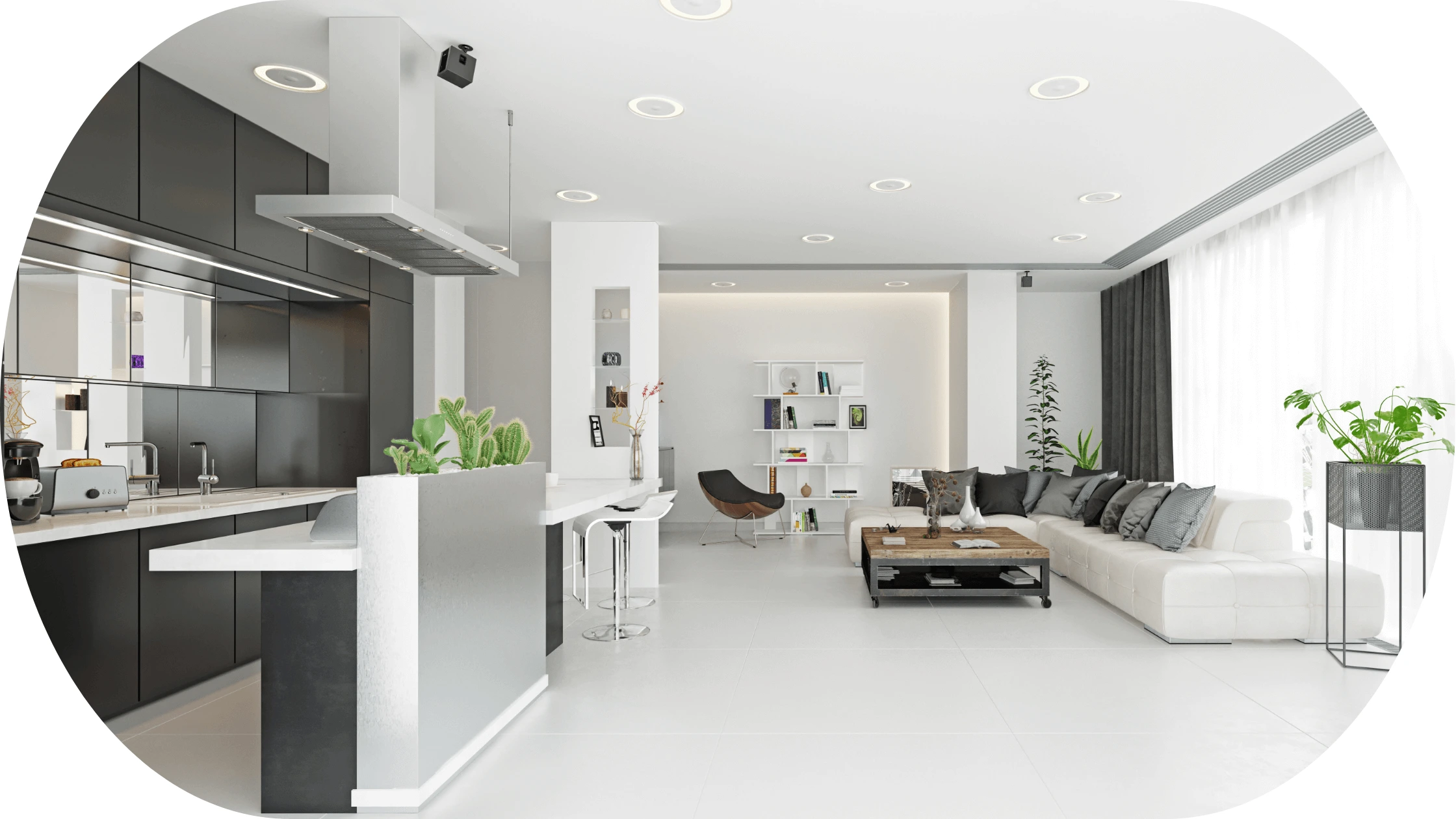
Discover the latest smart home innovations for a modern lifestyle. From automation to security, explore how smart technology can transform your home.
In a technology-driven world, the concept of a smart home has shifted from futuristic aspiration to modern-day necessity. What you might imagine is a home that not only ensures your comfort but anticipates your needs, saves energy, and even enhances your security. The smart home revolution has brought about smart home automation, energy-efficient smart homes, and enhanced living experiences that cater to convenience, security, and Sustainability. However, due to the rapid evolution of technology, keeping up with the latest trends and devices can feel overwhelming. So, what does it mean to have a truly “smart” house today, and how can these advancements genuinely benefit our lives?
This article explores the essential aspects of smart home technology, from the latest smart home devices to understanding how to design a connected ecosystem tailored to your needs. We’ll delve into the core benefits of a smart house, must-have gadgets, future trends, and the steps to start building a connected living environment. Along the way, we’ll answer critical questions about cost, compatibility, and security to help you navigate the smart home journey.
1. Smart Home Innovations
What defines a Smart Home Today?
In the modern context, a smart home is more than just a collection of connected devices. It is an integrated system within the home that enhances convenience, security, and efficiency. A well-designed smart house combines a variety of smart home gadgets and smart home technology that communicate with each other through a centralized hub or app. From smart lighting that adjusts to your daily routine to smart thermostats that conserve energy, today’s smart homes are all about personalization and proactive management of resources. As technology advances, smart houses keep redefining comfort and convenience by making daily tasks almost effortless.
The Impact of Smart Homes on Modern Living
Smart homes are transforming the way we live. They provide increased efficiency and control over how we interact with our environments. The shift to automation saves time and reduces energy consumption, leading to a more sustainable lifestyle. Smart houses also promote accessibility, with features like voice assistants that allow users to control devices hands-free, making everyday tasks easier and more enjoyable. By staying connected and adapting to our needs, smart home automation is reshaping modern living with a focus on ease and sustainability.
2. The Benefits of Embracing Smart Home Technology


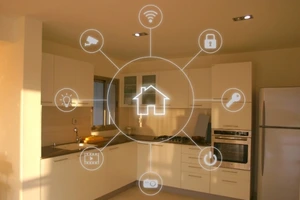

Convenience and Automation: A New Era of Home Management
One of the primary benefits of smart houses is the convenience that automation offers. For instance, imagine starting your morning with your blinds opening, coffee brewing, and the perfect playlist beginning—all with no manual effort. Such automation creates a seamless experience, allowing you to set routines that match your lifestyle. With connected devices, you can automate various daily tasks, simplifying house management while freeing up time for what matters most.
Energy Efficiency and Cost Savings Through Smart Tech
Moreover, smart technology offers genuine savings through energy-efficient smart homes by managing resource consumption more effectively. Smart thermostats, for instance, learn your preferences and adjust temperatures automatically, reducing wasted energy. Similarly, smart lighting can detect occupancy and turn off when rooms are unoccupied. These innovations reduce the carbon footprint and lead to substantial cost savings on utility bills over time.
Enhanced Home Security and Safety Features
With smart home security systems, keeping your house safe has never been easier or more effective. Today’s smart security solutions, such as cameras and doorbell systems, provide real-time monitoring and instant alerts on your smartphone. These features allow you to monitor your property remotely, adding an extra layer of security. Motion sensors, window alarms, and automated locks enhance safety even further, providing peace of mind even when you’re away from home.
Boosting Comfort and Customization in Everyday Living
Smart houses bring a new level of customization that enhances personal comfort. For example, with smart lighting and thermostats, homeowners can control the ambiance, temperature, and background music to suit any mood or occasion. This level of customization adds comfort and enjoyment, making it easy to transform your space to fit your needs. Every element is designed to simplify and enrich your daily life, adapting effortlessly to your routines.
3. Key Smart Home Devices for the Modern Home
Transforming your house into a smart one starts with understanding the essential devices that make everyday living more convenient, efficient, and secure. From voice assistants that act as the central hub for managing your smart ecosystem to advanced lighting and security systems, these devices redefine modern home living. Below, we explore four key categories of smart house technology:
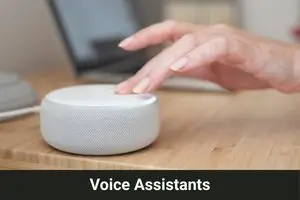

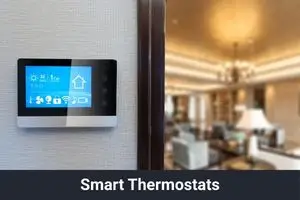
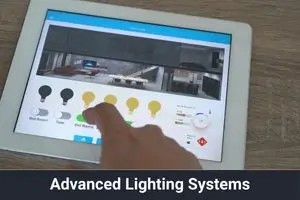
Voice Assistants: The Heart of Smart Home Management
Voice assistants like Alexa, Google Assistant, and Siri are central hubs in a smart home. Not only do they play music or answer questions, but they can also control a wide range of smart home devices. Integrating a voice assistant means homeowners can enjoy hands-free control over their connected gadgets, from adjusting lighting to locking doors. This technology allows seamless device management through simple voice commands, offering a practical yet futuristic experience.
Smart Thermostats: Optimize Temperature and Energy Use
Smart thermostats revolutionize how we manage energy in our homes. These devices learn your temperature preferences and automatically adjust settings to optimize energy usage. In addition, geofencing and remote access allow you to control the thermostat from anywhere, reducing energy consumption when you’re not home. With smart thermostats, you not only improve comfort but also contribute to a more sustainable and energy-efficient smart home.
Advanced Lighting Systems: Create the Perfect Ambiance
Lighting plays a crucial role in setting the ambiance, and smart lighting systems make it easier to adjust brightness, color, and even schedules. These systems can be customized to match any activity or time of day, enhancing the atmosphere of your space. Beyond aesthetics, smart lighting contributes to energy savings by allowing users to automate on-and-off settings based on occupancy, significantly reducing unnecessary power usage.
Security Cameras and Doorbells: Peace of Mind at Your Fingertips
The importance of smart home security cannot be overstated. Modern security cameras and doorbells offer live video streaming, motion detection, and instant alerts, allowing you to monitor your house in real-time. These devices are designed to provide peace of mind, enabling remote access to security features through your smartphone. So, whether at work or on vacation, smart security devices help keep your home safe.
4. Future Trends in Smart Home Tech
The Evolution of AI in Home Automation
Artificial Intelligence is taking smart home automation to new heights. AI-driven devices can predict user needs by learning from behavior patterns, enabling homes to become more responsive and adaptive. Hence, from predictive energy management to personalized device settings, AI enhances smart houses by creating highly personalized and efficient living environments. As AI evolves, the possibilities for innovation in home automation continue to grow.
Integrating Sustainable, Eco-Friendly Smart Devices
As environmental awareness grows, the demand for eco-friendly smart home gadgets also increases. Hence, sustainable smart devices are designed to use fewer resources by incorporating energy-efficient features that ultimately benefit the planet. For example, innovations like solar-powered devices, smart recycling systems, and water-conserving appliances clearly reflect a growing trend toward greener living. Moreover, these devices help reduce waste and actively encourage eco-conscious behavior, thus aligning smart homes with long-term sustainability goals.
Expansion of IoT Devices and Their Impact on Daily Life
The Internet of Things (IoT) is a significant force driving the smart house movement. With more smart home devices connected than ever, IoT enables seamless integration across different systems, ultimately transforming everyday life. For instance, from wearables that monitor health to smart fridges that notify users of low inventory, the potential of IoT in creating a fully connected home ecosystem is virtually limitless. As a result, this expansion will make smart houses more accessible and functional for everyone.
5. How to Start Building a Smart Home
Setting Goals and Budget for Smart Home Integration
Defining goals and budgets is essential when starting a smart home project. To begin, consider what you aim to achieve, whether it’s improved energy efficiency, enhanced security, or simply convenience. Additionally, budgeting helps determine which devices are priorities, allowing you to start with core gadgets before expanding. Eventually, understanding your goals and constraints sets a solid foundation for a practical and tailored smart house setup.
Essential Gadgets for Beginners and Advanced Users
For beginners, essential devices such as smart thermostats, lighting, and security systems provide an excellent introduction to smart home automation. As you become more comfortable with the technology, you can expand to advanced devices like voice assistants and energy management systems. All of which further enhance your experience. Ultimately, choosing the right gadgets based on your needs and familiarity with the technology can simplify the journey.
6. Potential Challenges and Considerations
Privacy and Data Security Concerns
One of the main concerns with smart home technology is data privacy. Connected devices collect and share data, which raises security risks if not managed correctly. Therefore, equipping devices with robust security features, such as encryption and multi-factor authentication, is essential for protecting personal information. As smart houses become more common, awareness of privacy risks and solutions will be vital for safeguarding your data.
Compatibility Issues with Different Smart Devices
Compatibility between various smart home devices can be challenging, mainly when brands use proprietary technology. Devices from different manufacturers may not always work together seamlessly, which can limit the functionality of your home. Thus, to avoid compatibility issues, it’s often best to choose devices that are part of a single ecosystem, such as Google Home, Amazon Alexa, or Apple HomeKit. Additionally, selecting products that adhere to open standards can enhance compatibility and ensure a smoother user experience.
Cost Factors and Long-Term Investment Benefits
Investing in a smart house can be costly initially, but the long-term benefits are worth considering. Energy-efficient devices, automated management, and enhanced security contribute to cost savings over time. Moreover, an energy-efficient smart home reduces environmental impact, adding value beyond mere convenience. While the initial investment may be significant, smart houses offer a compelling return on investment through increased savings and improved quality of life.
In conclusion,
Incorporating smart home innovations brings a multitude of benefits, from increased convenience and enhanced security to significant energy savings. With innovations like smart home automation, energy-efficient devices, and integrated security systems, these technologies transform homes into responsive, efficient, and customized living spaces. The value of these advancements lies not only in their immediate convenience but also in their ability. To contribute to a sustainable lifestyle and support our evolving daily needs.
As the smart house industry grows, It’s increasingly important to future-proof your home. Investing in compatible and adaptable devices while staying informed about advancements in smart technology helps to ensure that your home remains up-to-date. Keeping an eye on trends such as AI-driven automation and IoT expansion will help you make informed decisions, allowing your smart house to evolve alongside technology.
Now is a great time to take that first step into home automation or expand your existing setup. Whether you start small or embrace a complete system, moving towards a smart house is an investment in convenience, security, and sustainability that will pay off in the short and long term.
Leave a Comment




